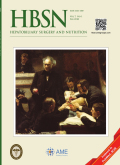10.3978/j.issn.2304-3881.2012.12.06
Magnetic resonance cholangiopancreatography in assessing living liver donors biliary anatomy: opportunities and challenges
To the editor:
Although it is questionable whether Magnetic Resonance Cholangiopancreatography (MRCP) should be considered the new standard of reference in biliary imaging (1), state-of-the-art MRCP provides panoramic images with high spatial and temporal resolution, leading to successful applications in different clinical settings (2). As a consequence, MRCP has gained acceptance as the most reliable alternative to direct cholangiography in depicting the biliary system (2). Hence, we read with great interest the paper by Ragab et al., "Correlation between 3D-MRCP and intra-operative findings in right liver donors", in this first issue of Hepatobiliary Surgery and Nutrition. Pre-operative definition of biliary anatomy in living liver transplant donors exemplifies advantages and challenges related to the use of MRCP in clinical practice. As Ragab et al. emphasized, biliary variants are numerous and occur frequently, being associated with surgical technical challenges and an increased risk of postoperative complications in both the donor and recipient (3). In accordance with these Authors, we believe that isolated literature results in favour of endoscopic retrograde cholangiography (ERC) (4) should not encourage its use in the scenario of liver donor liver trasplantation (LDLT). MRCP is safe, repeatable and reproducible (5), and has been shown to be highly accurate in identifying biliary abnormalities noninvasively. On the contrary, ECR is associated with radiation exposure and quantifiable morbidity, making at risk of severe complications otherwise healthy liver donors (3).
2
2019-07-18(万方平台首次上网日期,不代表论文的发表时间)
共3页
165-167






